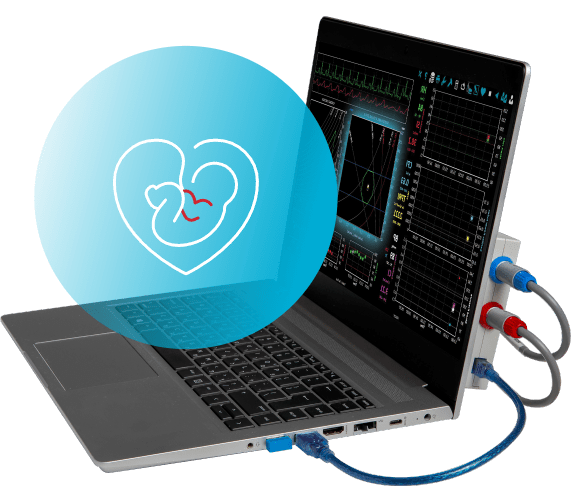Gestational Hypertension
NICaS is designed to assist physicians to determine the exact cause of hypertension for preeclampsia management. NICaS is based on patients’ objective hemodynamic parameters, allowing physicians to reach a deeper understanding of the dynamics concerning each patient’s hypertension and to improve preeclampsia management.
Challenges
Preeclampsia and eclampsia significantly increase the risks of maternal and perinatal adverse outcomes. These may include placental abruption, preterm birth, and low birthweight.
Preeclampsia management focuses primarily on maternal hypertension therapy. This can reduce the risk of severe hypertensive episodes and safely prolong gestation.
There is no accepted standard for the management of preeclampsia.
Solutions
With NICaS, physicians can more effectively prescribe the proper medication for the right cause of hypertension.
Enabling personalized treatment suited to the individual hemodynamic profile.
NICaS data can assist in eliminating hypertension as a risk factor that can cause complications during pregnancy: preeclampsia, etc.
Preeclampsia In Numbers:
10% of all pregnancies are impacted by hypertension
14% of all maternal deaths worldwide are due to hypertensive disorders
46% of women with gestational hypertension will progress to preeclampsia

Related Clinical Markets
Related Clinical Studies
Directed antihypertensive therapy improves growth restriction and perinatal mortality in women with chronic hypertension.
Authors: David Chaffin, Jesse Cottrell, Kelly Cummings, David Jude. Maternal Hypertension Center at Cabell Huntington Hospital, Virginia, USA Conclusion: Impedance cardiography-directed antihypertensive therapy during early
The Hemodynamics of Labor in Women Undergoing Vaginal and Cesarean Deliveries as Determined by Whole Body Bioimpedance
Authors: Eran Ashwal, Shiri Shinar, Sharon Orbach-Zinger, Shaul Lev , Roi Gat, Liron Kedar , Yehuda Pauzner , Amir Aviram , Yariv Yogev , Liran
Directed antihypertensive therapy improves growth restriction and perinatal mortality in women with chronic hypertension
Authors: David Chaffin, Jesse Cottrell, Kelly Cummings, David Jude Conclusion: Impedance cardiography-directed antihypertensive therapy during early pregnancy allows for informed initiation and titration of blood
Pregnancy outcomes of massively obese hypertensive gravidas
Authors: David G.Chaffin Jr. Jessica Granger Conclusion: In massively obese women with preexisting hypertension, hemodynamically guided treatment results in fewer cases of severe preeclampsia and
Maternal cardiac hemodynamics in normotensive VS pregnancies with preeclampsia – did we find a helpful tool?
Authors: Maya Ram, Anat Lavie, Shaul Lev, Yair Blecher, Yael Shulman, Tomer Avnon, Eran Weiner, Ariel Many Conclusion: The accuracy and noninvasiveness of the NICaS
Cardiac hemodynamics before, during and after elective cesarean delivery, do we really know it all?
Authors: Anat Lavie, Maya Ram, Shaul Lev, Yair Blecher, Yael Shulman, Tomer Avnon, Eran Weiner, Ariel ManyConclusion: The researchers found that 3 min after delivery
Cardiac hemodynamics in labor and postpartum – a new look into physiology
Authors: Eran Ashwal, Liran Hiersch, Yehuda Pauzner, Avital Wertheimer, Amir Aviram, Arnon Wiznitzer, Yariv Yogev Conclusion: The hemodynamic physiology of labor is characterized by significant
Cardiac index in pregnancy – friend or foe
Authors: Maya Ram, Anat Lavie, Shaul Lev, Yair Blecher, Yael Shulman, Tomer Avnon, Eran Weiner, Ariel Many Conclusion: The purpose of the study was to
